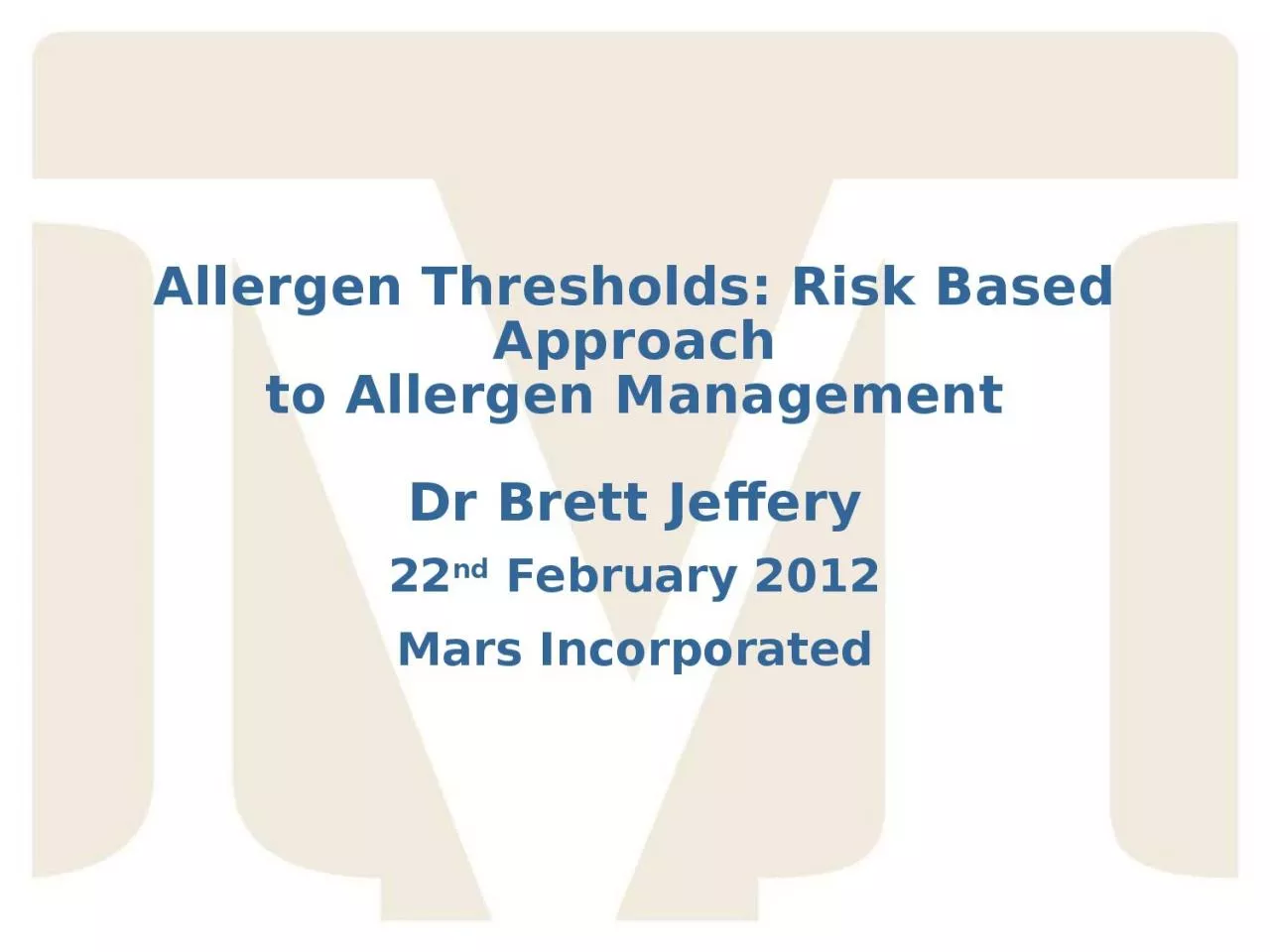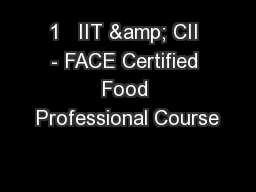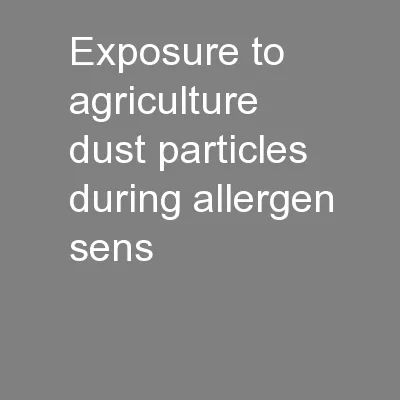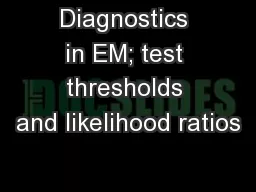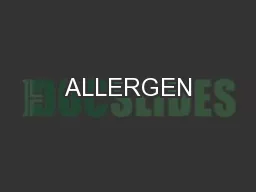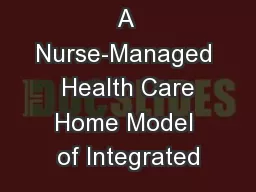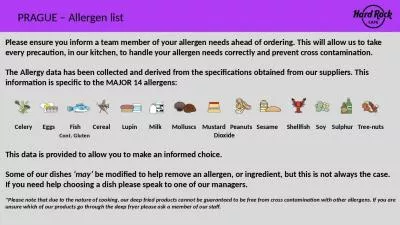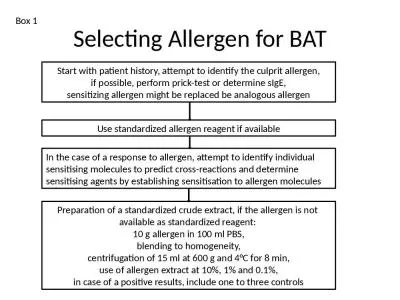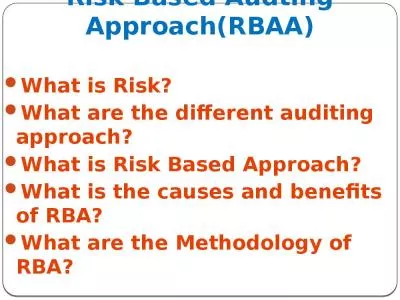PPT-Allergen Thresholds: Risk Based Approach
Author : CuteKitten | Published Date : 2022-07-28
to Allergen Management Dr Brett Jeffery 22 nd February 2012 Mars Incorporated Introduction Allergen management has matured considerably over the last 1015 years
Presentation Embed Code
Download Presentation
Download Presentation The PPT/PDF document "Allergen Thresholds: Risk Based Approach" is the property of its rightful owner. Permission is granted to download and print the materials on this website for personal, non-commercial use only, and to display it on your personal computer provided you do not modify the materials and that you retain all copyright notices contained in the materials. By downloading content from our website, you accept the terms of this agreement.
Allergen Thresholds: Risk Based Approach: Transcript
Download Rules Of Document
"Allergen Thresholds: Risk Based Approach"The content belongs to its owner. You may download and print it for personal use, without modification, and keep all copyright notices. By downloading, you agree to these terms.
Related Documents

